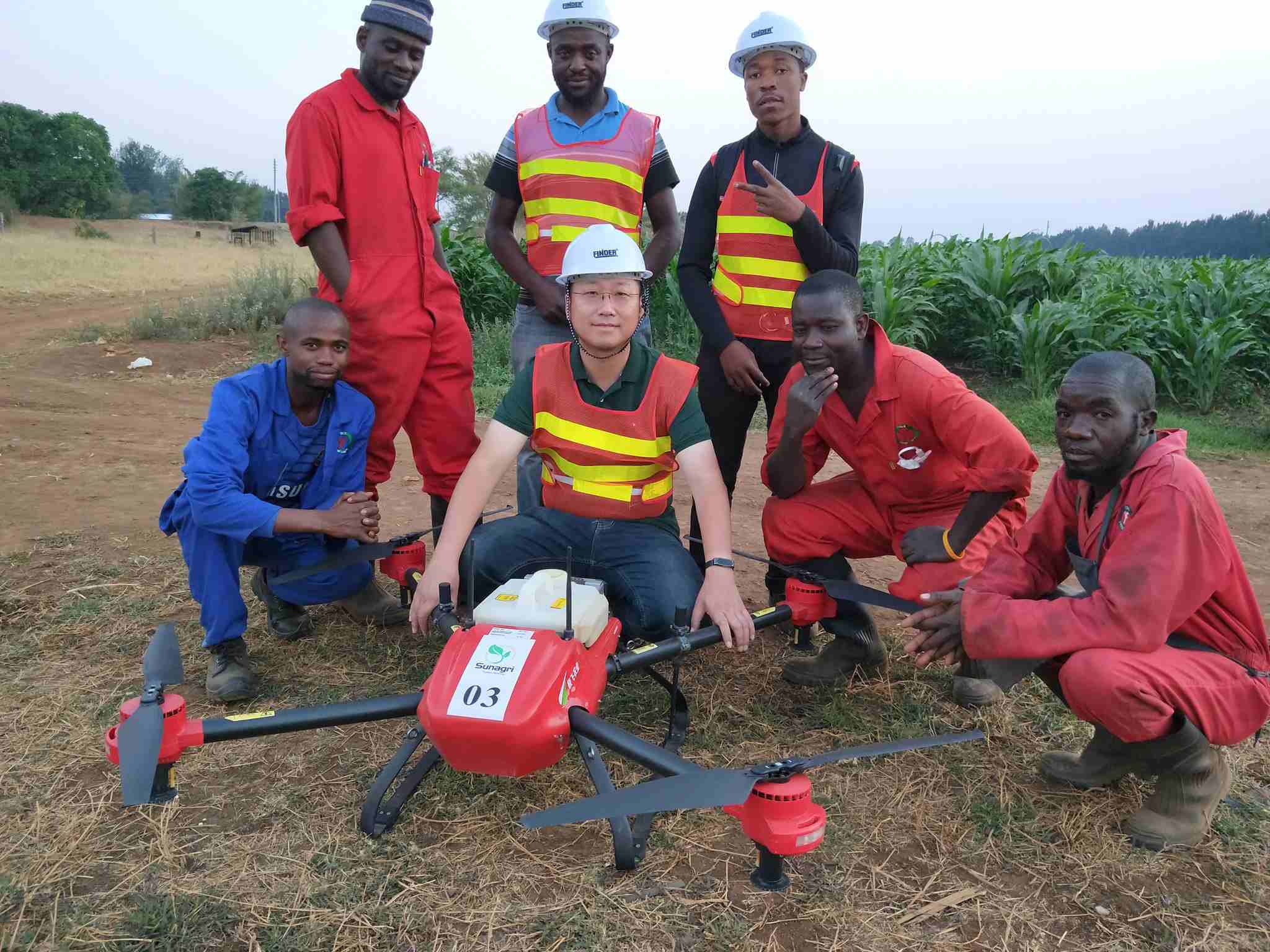From Zambia to China, Drones Unleashed to Defend Crops Against Fall Armyworm
Almost exhausted and sweating all over, Bai Anwei, a crop-protection service provider in Yunnan, China, had been travelling around different cornfields with drones to spray pesticides for maize crops. He had already kept working by fields throughout the day, from 6 a.m. to 2 a.m. the next morning. “We don’t have much time. This is the only way to stop the pests from marching and wreaking havoc over more farmlands,” he said with a hint of bitter smile.
6,005 miles from China, Fraser Zhang was leading his crop protection team for another drone spraying experiment against the same kind of pests at dusk in Zambia. He has witnessed how Zambia has been suffering from the plague of pest disease nationwide.
The rampaging pest that perplexed Bai and Zhang is called fall armyworm, a highly destructive crop invader originated from the Americas and spreading rapidly across Africa and Asia in recent years. This pest has been terrifying farmers and causing extensive yield loss around the globe, just like a virus.
Without well-validated natural enemy or genetically modified maize, local farmers in Africa and Asia mostly resort to traditional insecticide spraying but, in some cases, find the effect disappointing. Having developed new technology to replace the old fashioned, XAG starts actively engaging in the fight against fall armyworm in some of most affected areas, such as Zambia and China.
From Ground to Air: Fall Armyworm Fight Goes Intelligent in Zambia
Fraser Zhang, founder of Sunagri Investment Zambia Limited, is one of the early adopters who introduced drones into the battle against fall armyworm. As an agriculture technology service provider, he has been utilising XAG’s plant protection drones for aerial spraying in Zambia since 2018.
Fraser Zhang and his team member
Zambia is one of the regions where fall armyworm struck first in Africa in early 2016. The country has been facing a formidable fight, since the pests prefer to feast on maize which is the staple crop for Zambians. According to a national household survey, up to 99% of farmers reported that their cornfields had been infested by fall armyworm, with the average yield loss reaching 35%, equivalent to an economic value of nearly USD 160 million.
“Corn is considered a type of crop easier to grow and manage without any additional chemical treatment. However, the outbreak of fall armyworm changes everything. Farmers have to spray pesticides to kill the pests, otherwise they would be left penniless with a devastated cropland,” Fraser Zhang explained the situation.
In Zambia, use of pesticides involving hand sprayers has remained the most widely deployed method to contain fall armyworm. But obviously, this is not a safe, effective measure to ward off pests with strong migration and reproductive ability. “It is unpractical to conduct manual spraying over farmlands larger than 5 hectares, let alone a massive waste of pesticides and the risk of chemical poisoning,” Zhang added.
In addition, farmers usually get more frustrated when they have sprayed pesticides multiple times but without any effect. Inappropriate use of pesticides might be the reason, as well as fall armyworm’s unique natural habits that make it impossible to eliminate the pests by hand sprayers.
XAG
to replace manual spraying in Zambia
Fraser Zhang describes the pest as a ‘crop-killing monster’, since it not only eats maize but also attack 80 additional crop species, including wheat, sugarcane, sorghum and ginger. “At daytime, the fall armyworm caterpillars usually hide inside the central part of corn and sometimes burrow into the soil. When they grow older, they would generate large quantities of frass to block the whorls, making it difficult for chemicals to contact the pests.”
When facing such tough situation, Zhang realised that the combat against fall armyworm needs to go aerial. So, he reached out to XAG for its precision UAS spraying solution. During last years’ growing season, his team has conducted a series of field experiments and practical operations on three commercial farms, covering approximately 200 hectares of croplands.
Spraying experiemnt on fall armyworm control
At Kalele Farm, located in Kabwe, Zambia, fall armyworms were successfully defeated on 30 hectares of heavily infested cornfield. “The farm manager thought his maize crops couldn’t stand a chance against the pests and decided to place a bet on new tech. We utilised the spraying drones to apply chemical treatment twice, and the result was quite satisfying as a yield loss was avoided,” Zhang said.
Swarm operation for higher efficiency
Now with a year of accumulated experience on UAS crop protection, Zhang and his company Sunagri have started to introduce
’s drone-based spraying service to more local companies and commercial farms, including Zambia Sugar, Kasama Sugar, York Farm, Butter Mere Farm and Seedco.








